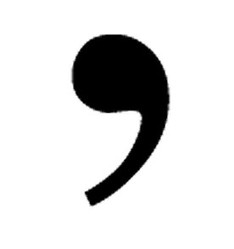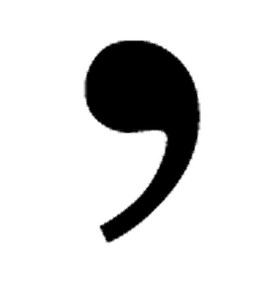It is only small, but this punctuation mark has created many words of controversy over its use. Known as the Oxford comma, series comma, serial comma and Harvard comma, it is the comma that goes before the "and" or "or" in a list. Here, Steve Rogerson gives some advice on when and when not to use it.

The Oxford comma: What it is and when to use it
A look at the use in punctuation of the Oxford comma, also known as the series comma, serial comma and Harvard comma
The Oxford Comma looks no different to a normal comma but its usage is one that causes controversy among editors and writers. Also known as the series comma, serial comma and Harvard comma, it is the comma that would go in a list of items before the “and” or “or” that precedes the last item in the list. So, for example, the first of the following sentences uses the Oxford Comma whereas the second does not:
- The items he put into the van included screwdrivers, white paint, a hammer, and a flask of hot coffee.
- The items he put into the van included screwdrivers, white paint, a hammer and a flask of hot coffee.
In a fairly straightforward list such as the above the decision comes down to style and preference. There are also national differences. Most schools in England, for example, teach that the Oxford Comma should never be used for simple lists whereas in the USA the norm is for it always to be used in lists containing three or more items.
Fowler on the Oxford comma
In Fowler’s Modern English Usage, it points out that the use of a comma in lists is to replace the word “and”, otherwise the list above would read:
- The items he put into the van included screwdrivers and white paint and a hammer and a flask of hot coffee.
Fowler argues that there is no need therefore for the final comma in a list as the word “and” is still there. He does, however, acknowledge that there are cases where, to avoid ambiguity, it should be used if the items in the list are more complex.
House styles on the Oxford comma
The house styles of magazine and newspapers in England try to deal with this by specifying when and where it should and should not be used. The norm is not to use it except in certain circumstances. A common example is to have no comma before the "and" unless the list itself contains the word "and".
The following two sentences show that in practice:
- The items he put into the van included screwdrivers, white paint, a hammer and a flask of hot coffee.
- The items he put into the van included screwdrivers, red and white paint, a hammer, and a flask of hot coffee.
An extra rule that some magazines in England adopt is if the list itself includes a comma, then start the list with a colon and use semi-colons to separate the items, including before the "and". So, in the above example:
- The items he put into the van included: screwdrivers; red, black and white paint; a hammer; and a flask of hot coffee.
In conclusion, there is no right or wrong in the use of the Oxford Comma for simple lists and it is a matter of writer’s preference or house style. However, if there is a danger of ambiguity that the Oxford Comma would solve, then it should be used. Likewise, if using the Oxford Comma would create ambiguity that was not previously present, then it should not be used.
You might also like
How to Write a Captivating LoglineWith just one sentence, a logline needs to do several things, not least of wh...
10 Ways to Keep Creative Writing Ideas FlowingTips and tricks to keep those creative juices flowing. If inspiration refuses...







 KZine Issue 31: Review of October 2021 Issueon 11/07/2021
KZine Issue 31: Review of October 2021 Issueon 11/07/2021
 KZine Issue 30: Review of June 2021 Issueon 07/05/2021
KZine Issue 30: Review of June 2021 Issueon 07/05/2021
 KZine Issue 29: Review of February 2021 Issueon 02/23/2021
KZine Issue 29: Review of February 2021 Issueon 02/23/2021
 KZine Issue 28: Review of September 2020 Issueon 10/01/2020
KZine Issue 28: Review of September 2020 Issueon 10/01/2020



Comments
SteveRogerson, Thank you for practical information, pretty pictures and product lines.
In particular, I like the Harvard comma and the Oxford comma. Nevertheless, it probably looks from my writing that I don't since I tend not to use it because of character counts for article titles and for content summaries.
What would you think of writing an article about dashed and hyphenated words?
I believe the usage, or not, changed over the years. So, perhaps age has a bit to do with use or do not use.